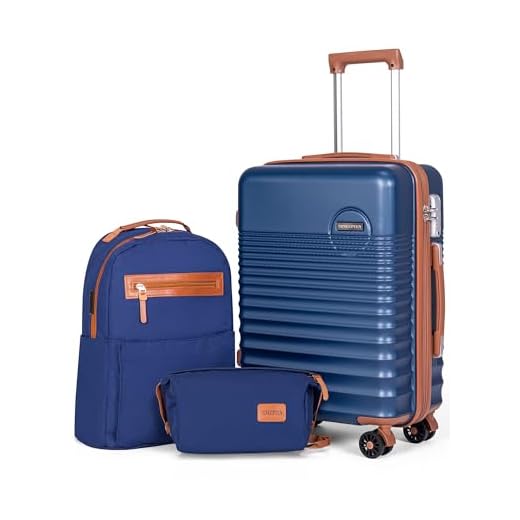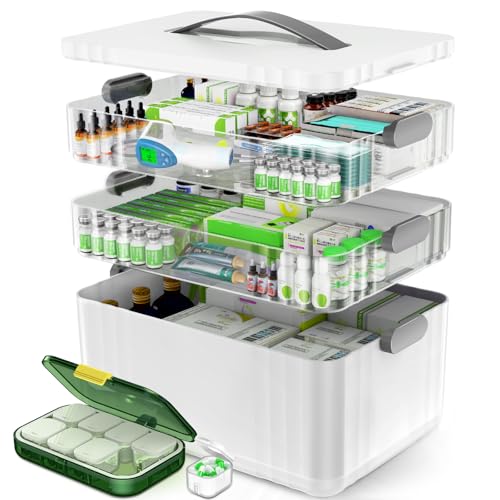







The ideal dimension for carry-on items typically ranges between 22 x 14 x 9 inches (56 x 36 x 23 centimeters) and 24 x 16 x 10 inches (61 x 41 x 25 centimeters). These measurements ensure compliance with most airline regulations, reducing the risk of extra fees or complications during boarding.
Consider weight restrictions as well. Many airlines impose limits around 15 to 22 pounds (7 to 10 kilograms) for cabin bags. Investing in a lightweight yet durable bag can help maximize the amount of belongings you can bring along without exceeding these limits.
Design plays a significant role; opt for bags featuring multiple compartments and organizational pockets. This allows for easy access to essentials, minimizing delays at security checks. Additionally, ensure your choice is compatible with under-seat storage, providing both convenience and compliance.
Recommended Dimensions for an Overnight Bag
An overnight carry-on typically measures around 55 cm x 40 cm x 20 cm (21.5 in x 15.5 in x 7.5 in) for air travel. This size is accepted by most airlines as an onboard item without any additional fees.
Weight Limits
The optimal weight range for a personal item is generally between 7 kg and 10 kg (15 lbs to 22 lbs). Exceeding this limit may result in additional charges or the necessity to check the item.
Shape and Compartments
A structured design with multiple compartments aids in organization. Many travelers prefer bags with a separate section for electronics and important documents, enhancing accessibility during security checks. Consider options like wheeled bags or backpacks for ease of transport.
Understanding Airline Regulations for Cabin Baggage
Check specific airline policies before packing. Each carrier has unique dimensions and weight limits for onboard bags. Most commonly accepted sizes range from 55 cm x 40 cm x 20 cm to 56 cm x 45 cm x 25 cm.
- Weight restrictions: Typically between 7 kg to 10 kg (15 lbs to 22 lbs). It’s crucial to weigh your bag beforehand.
- Items allowed: Personal items such as laptops, cameras, and jackets are generally permitted alongside your main carry-on. However, all items must fit within the total measurement limit.
- Security regulations: Liquids must not exceed 100 ml per container, with all containers fitting into a 1-liter clear, resealable bag. Be prepared for screening; remove electronics and bags from your carry-on during security checks.
- Special items: Many airlines allow a duty-free shopping bag, sports equipment, or assistive devices contingent upon prior notification.
Consider investing in a best messenger bag backpack hybrid to maximize organization and accessibility during travel.
Review policies ahead of checkout to avoid unexpected fees. Each airline updates their regulations periodically, so staying informed will save time and hassle at the airport.
Measuring the Maximum Dimensions for Carry-On Bags
For optimal compliance with airline policies, dimensions for carry-on items typically do not exceed 22 x 14 x 9 inches (56 x 36 x 23 cm), including wheels and handles. It’s wise to check specific guidelines from the chosen airline as these can vary. A reliable measure is to choose a bag that meets or falls below these standards.
Tips for Accurate Measurement
Using a measuring tape, confirm the dimensions of the chosen piece. Measure length, width, and height separately, ensuring to include all protruding parts like wheels. If uncertain about exact measurements, it can be beneficial to adjust packing methods.
Choosing the Right Bag
Select a practical option that fits the requirements without sacrificing functionality. Consider options like the best inexpensive travel backpack, which balances dimensions, weight, and usability for various travel scenarios.
Choosing the Right Size Based on Travel Duration
For short trips of one to three days, opt for a compact bag with dimensions around 40cm x 20cm x 25cm. This size accommodates basic essentials such as clothing, toiletries, and a device without hassle. Choose items that can multitask; a pair of comfortable shoes that serve for both day and evening wear is ideal.
When the travel duration extends to a week, increase capacity to approximately 55cm x 40cm x 20cm, allowing space for extra attire and personal items. Include a packing cube to maximize organization and efficiency. Consider materials that are lightweight yet durable to avoid excess weight at check-in.
Extended Trips and International Flights
For journeys lasting longer than a week or international travel, larger carry-ons measuring between 56cm x 45cm x 25cm to 65cm x 40cm x 30cm become necessary. These provide flexibility for varied climates and activities. Invest in a quality bag with multiple compartments to facilitate easy access during layovers. Reducing the volume of toiletries by using travel-sized containers can also save space.
Always consult your airline’s specific regulations regarding carry-on dimensions and weight, as compliance avoids delays. When approaching security checkpoints, pack your electronics and liquids in an easily accessible manner. Additionally, consider versatile clothing that can easily be layered, enhancing utility without overwhelming your bag.
In addition, while planning your travel essentials, consider how factors like accommodation and transport will affect what you truly need to carry. For more insights into optimizing your operations, check out this link: how can a healthcare organization improve its revenue cycle management.
Packing Strategies for Optimal Use of Space
Maximize capacity by rolling clothes instead of folding. This technique compresses fabric and reduces wrinkles, allowing more items in limited compartments.
Utilize packing cubes or compression bags to organize and condense clothing. These solutions enable efficient allocation of different categories without wasting space.
Prioritize versatile clothing that can be layered or mixed and matched for multiple outfits. Neutral colors enhance compatibility, reducing the total number of garments needed.
Place heavier items at the bottom of your travel carrier for improved balance. This practice helps to keep the bag stable during transit.
Take advantage of empty spaces inside shoes or amongst other items for smaller essentials. This creates additional storage without increasing bulk.
Keep frequently accessed items near the top for easy retrieval. This avoids rummaging through the entire bag, ensuring convenience during travel.
Consider travel-sized toiletries and refillable containers to minimize space occupation. Adhere to liquid regulations to comply with safety measures.
Examine specific airline policies for dimensions and weight limits to prevent surprises at check-in. Adapting to regulations will ease the packing process.
Lastly, reevaluate items before departure and eliminate those that are unnecessary. A minimalist approach enhances mobility and comfort while traveling.
| Strategy | Description |
|---|---|
| Rolling Clothes | Reduces wrinkles and maximizes space. |
| Packing Cubes | Organizes items while compressing for more efficiency. |
| Versatile Clothing | Allows for multiple outfits with fewer pieces. |
| Heavier Items First | Improves balance and stability of the packed carrier. |
| Utilizing Shoe Space | Increases storage without adding bulk. |
| Frequent Access Items | Placed near the top for convenience. |
| Travel-Sized Toiletries | Minimizes space and complies with liquid regulations. |
| Item Reevaluation | Eliminates unnecessary items for a streamlined pack. |
Common Mistakes to Avoid When Selecting Carry-On Bags
Selecting the right cabin bag involves avoiding several frequent errors. Awareness of these pitfalls enhances travel experiences significantly.
Ignoring Airline Specifications
Always check the specific dimensions and weight limitations set by the airline. Regulations vary across carriers, and traveling with non-compliant baggage can lead to unexpected fees or denied boarding.
Overpacking with Unnecessary Items
List essentials prior to packing. Bulky or non-essential items clutter space, making organization difficult. Adhere to the necessities based on trip length and activities planned.
- Clothing: Pack versatile pieces that can be mixed and matched.
- Toiletries: Choose travel-sized versions to save space.
- Gadgets: Limit electronics to items that are indispensable.
Neglecting Accessibility
Position frequently used items, like travel documents or snacks, in easily accessible compartments. This speeds up security checks and on-board access without the need for rummaging through your entire bag.
Choosing Inappropriate Styles
Opt for a design suitable for both travel and personal style. Hard-shell suitcases offer robust protection, while soft bags provide flexibility. Prioritize practicality without sacrificing aesthetics.
Underestimating Security Protocols
Familiarize yourself with regulations regarding liquids and prohibited items. This knowledge reduces delays at checkpoints and ensures compliance with security measures.
Forgetting to Test the Bag
Before finalizing your choice, load it with your intended belongings to assess comfort and functionality. A trial run helps gauge fit and ease of transport.
Avoiding these common missteps will enhance the travel experience, making it smoother and more enjoyable.








